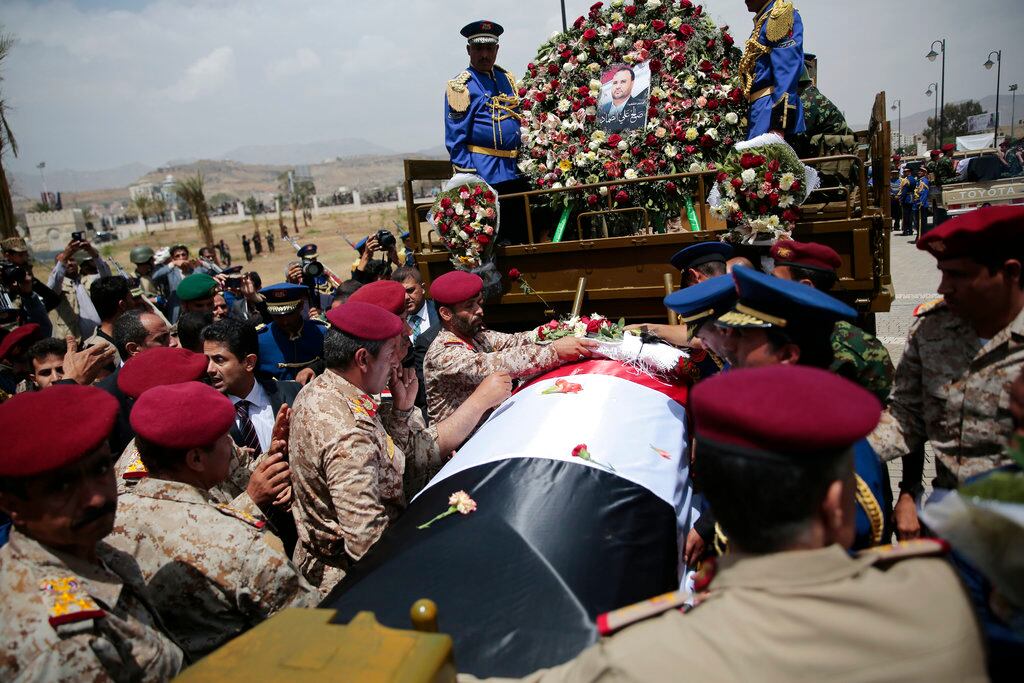Simple subtraction explains the impetus for self-driven supply convoys: For every autonomously driven vehicle, that’s one fewer human driver needed, and likely one or two fewer human escorts in the vehicle itself. Fewer humans means fewer injuries and deaths whenever the convoy encounters violence, like an ambush or an improvised explosive device.
Then there is multiplication: Take the driver and the escorts out of each truck in a seven-truck convoy, and that’s suddenly 14 to 21 soldiers that can do other tasks, like escorting the convoys in other, better-armored vehicles, ones that can withstand IEDs or provide more protection from small arms fire.
In June, the U.S. Army awarded Oshkosh Defense $49 million to integrate autonomous technology with the Palletized Load System vehicles in order to put robotics in the driver’s seat.
“It actually drives very, very human,” says John Beck, senior chief engineer for unmanned systems at Oshkosh. “The motion control algorithms that are done both on the by-wire side and on the autonomy side drive this vehicle much like a person does.”
RELATED

Oshkosh is one of three companies producing interrelated kits as part of the U.S. Army’s Expedient Leader Follower program, which aims to add several sets of autonomous features to the existing Palletized Load System vehicles. Oshkosh’s kit is the by-wire active safety kit, which links the driving controls to the other tools. Autonomous features come from a kit produced by Robotics Research, which adds the sensors and software that tell the vehicles what to do. DCS built the war-fighter machine interface, which includes a touch screen and lets people control the vehicles.
In the summer, Oshkosh started integration of the system on 10 trucks, with the goal of sending them to the government for qualification and safety testing in early 2019. Also in early 2019, the company plans to integrate the system on 60 more vehicles so they can be sent to the government for an operational task demonstration in 2020, at the latest.
The by-wire active safety kit is custom designed to the model of vehicle and is integrated to the vehicle’s systems. These include the engine, the transmission, the brakes, the steering and more, with redundancies to provide full operational capability when there’s nobody behind the wheel. Other features are ones associated with modern cars, like forward-collision warning, lane-departure warning, lane centering, backup warning and more.
Those features are enabled by an array of sensors, from traditional automotive radars for forward-collision warning to proximity detection for blind-spot detection and backup warnings. There’s a camera system that provides pedestrian detection and sign recognition. The forward camera is fused with the forward radar to give the latter better confidence in detecting a vehicle. Additional cameras in the kit provide a sort of surround-view system, with a backup camera and left, right and forward-looking views, as well as a bird’s-eye view for providing situational awareness while maneuvering.
“I have a lot of young soldiers that had been driving cars that do about everything for them,” said Pat Williams, vice president and general manager for Army and Marine Corps programs at Oshkosh, “and they’re getting out in the middle of these great big vehicles. It just makes sense from a safety perspective that those heavy tactical vehicles should have the same safety features as your own vehicle would have.”
If autonomy is a point of familiarity for young drivers, reducing the number of drivers needed per convoy is a major aim of the Army in the project. The Expedient Leader Follower program features not just robotic assistance for human drivers, it also enables uncrewed vehicles to autonomously follow directly behind another cargo truck. There’s even a high-resolution camera for teleoperation, though for now the remote operator remains nearby, rather than ensconced in a building far from the action.
“This is all local communication,” said Beck, “on an ad hoc network using full 256-bit encryption. That’s one layer of cybersecurity that can be managed.”
Removing the drivers from the vehicles does not mean handing control of the cargo truck over to anyone who can get inside the cabin. Sensors in the seat mean that when set in robotic mode, the cargo truck can tell if the people inside are supposed to be there. For the most part, this means allowing intended human occupants to take over driving if need be, but it can also work to prevent unauthorized humans from entering an empty cabin and attempting to take over the vehicle.
What if someone tried to stage a great robot convoy robbery?
“I imagine you’d be met with a deadly force,” Beck said.
These are, after all, vehicles designed for war zones. Removing drivers shouldn’t mean surrendering convoys to whatever road warriors can find the cargo vehicles. The mission profile for the Palletized Load System vehicles is hauling loads of up to 30,000 pounds for 8-hour-long drives.
By design, this is supposed to be uneventful work, but war punctuates mundanity with acute violence. Removing soldiers from the mindless task of driving the convoy vehicles themselves frees them to drive better-armored escort vehicles and spend escort missions focused on the escorting.
It may not seem like much, freeing up a squad of soldiers here or there. Yet these autonomous bots are a transformative change in war, shifting the grunt work from the grunts to machines, and letting the humans focus on the fighting.
Kelsey Atherton blogs about military technology for C4ISRNET, Fifth Domain, Defense News, and Military Times. He previously wrote for Popular Science, and also created, solicited, and edited content for a group blog on political science fiction and international security.







